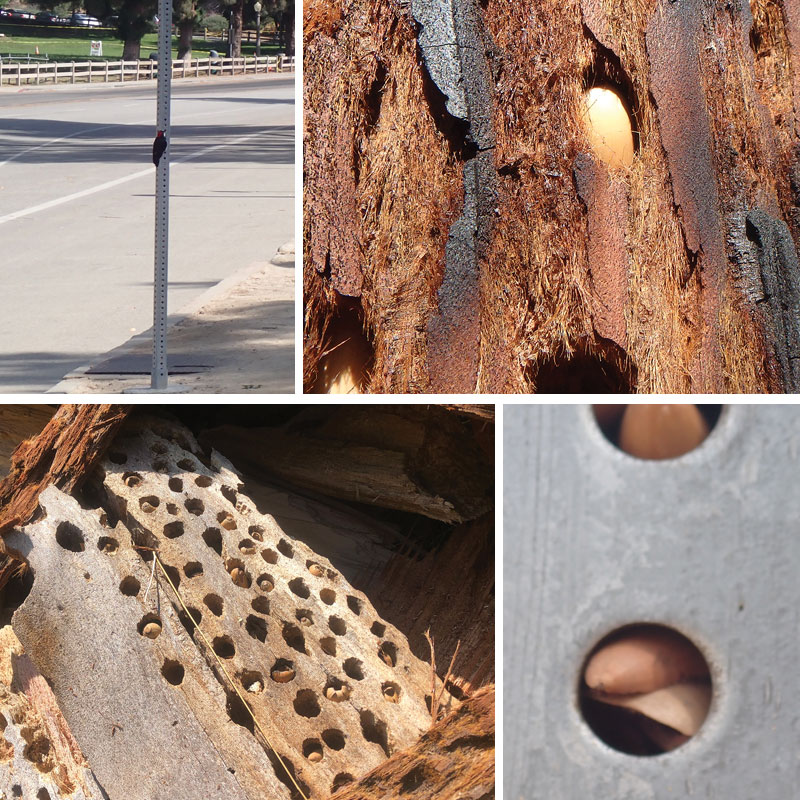Griffith Park serves as home to a large number of native plants and animals. Over thousands of years, the animals and plants have established mutualistic relationships in which they help each other and where both benefit.
One such relationship includes the Coast Live Oak, found throughout the canyons of the Park, and woodpeckers. Oaks produce thousands of seed known as acorns every year. Acorns drop to the ground when they reach maturity and are ready to germinate. Acorns that remain under the canopy and shade of the parent tree will have very little chance of surviving.
The oak tree wants to disperse its acorns as far as possible to give young seedlings an opportunity to find an open space for germinating and growing into a mighty oak. To disperse its seeds, oak trees hire woodpeckers.
Each acorn is loaded with carbohydrates a perfect meal for a hungry woodpecker. Woodpeckers will eat many acorns on the spot but when they’ve had their fill, they will carry many of the acorns away from the tree and store them for eating later through the fall, winter and spring seasons.
Woodpeckers store acorns in a granary which they typically make out of dead trees. When not harvesting and storing acorns, woodpeckers spend many hours tending their stored acorns and protecting it from thieving animals.
But not all acorns stay in the granary. Untended acorns often fall from its storage gallery, dropping to the ground, thereby giving seedlings inside the acorn opportunities to survive and germinate. Stolen acorns are also dropped by larcenous animals during a possible squabble with the protective woodpecker.
From the thousands of acorns that are produced by oak trees in Griffith Park each year, a very large number of them will end up in the stomach of a hungry animal and a very small amount will be lucky to survive to germinate and grow into a tree. In the mutualistic relationship between the oaks and the woodpeckers, the trees benefit from seed dispersal and the animal benefits with a nutritious meal.
What could happen when people interfere with this plant and animal relations?
What happens when for the safety of the public, large dead trees are removed from the Park and the woodpeckers are left with no trees to build their granaries?
The answer is as amazing as the wildlife that calls Griffith Park their home. Wildlife has adapted, reimagined and figured out how to take advantage and use the few resources that people have left for them. For example, woodpeckers are now using human-created traffic sign posts as granaries. Almost all the traffic signs along Vermont Ave are now granaries for woodpeckers and are being filled with acorns.
Wildlife in an urban environment must adapt in order to survive and the modern thinking woodpeckers of Griffith Park have abandoned the wooden granary and replaced them with steel cages which offer better protection for their valuable food. But what of dispersing oak seeds for future generations?
It took people just a few years to break the oak tree-woodpecker relationship that was in place for thousands of years. The consequences of the human these actions toward the wildlife in Griffith Park will be seen many years from now.
~Jorge Ochoa, LBCC
Photos courtesy: Jorge Ochoa




0 Comments